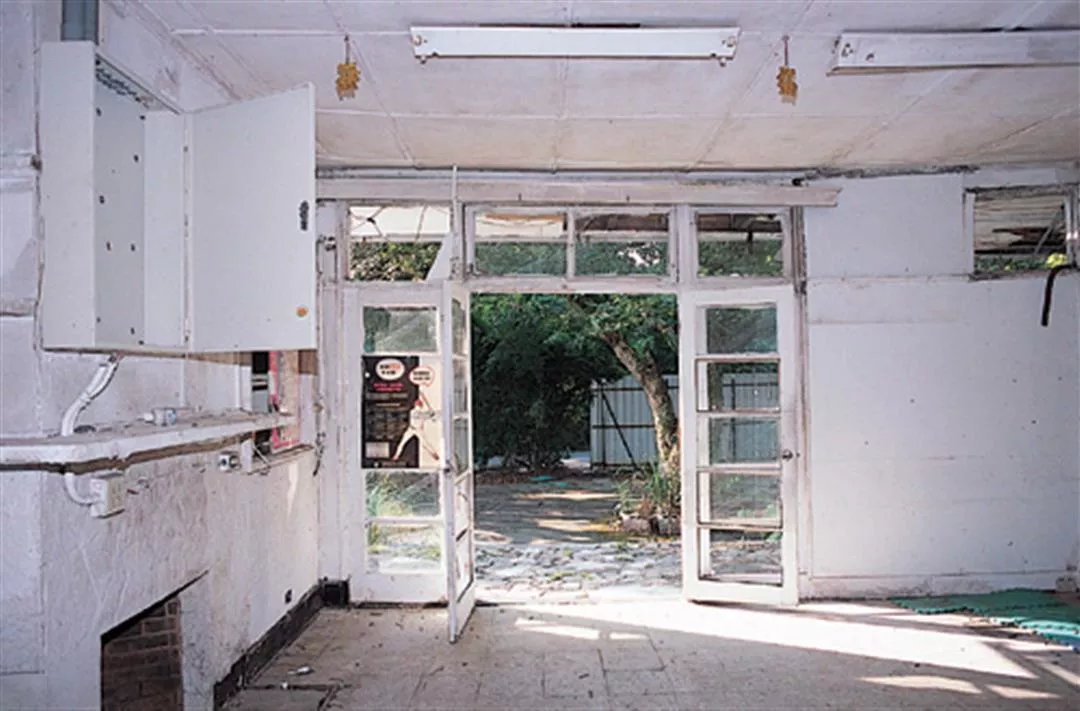Western architecture
To build the residences, the Americans provided blueprints for the houses and layout plans for the community, which were then constructed by the Taiwanese. Because the Taiwanese didn't have the authority to make changes to the plans, the buildings of the residential zone looked like American houses of the 1950s. It was as if an entire American town had been transplanted to Yangmingshan. Some architectural scholars therefore refer to the Shantzuhou American military housing as a settlement of "colonial" buildings.
Different from the usual cramped apartments in Taiwan, this group of military residences emulated the style of small-town houses. Most of them were bungalows, each one at least 264 square meters in area, and spacious lawns separated each house by ten to 15 meters, giving the residences ideal natural light, ventilation and privacy.
Most of the houses in the community were not separated by fences, and thus the lawns became recreation areas for residents and their children. This public space was the ideal portrait of a healthy, leisurely American lifestyle.
A prominent feature of the military housing was that each house had a chimney on the roof and a fireplace inside. Taiwan being subtropical, there's no need for chimneys or fireplaces, but to the Americans these accoutrements reminded them of home despite lacking practical use.
During the US military presence, a sentry was posted at each entrance to the community to ensure the safety and privacy of the residents and to prevent disputes with locals. A garrison of American MPs barred entry to those not in the US military. The residents enjoyed extraterritorial privileges, as if the zone were a country inside a country.
Yet within the heavily guarded, sequestered Shantzuhou American military housing, there occurred an incident that shook Taiwan's society. In 1957, Liu Tzu-jan, an employee at the Sun Yat-sen Institute on Policy Research and Development, was fatally shot in front of the residence of US Army sergeant Robert Reynolds. Reynolds had for a long time hired Liu to smuggle controlled products like imported tobacco and liquor out of the Army Co-op to sell on the market, pocketing the profit; and later, due to a monetary dispute between the two of them, Reynolds shot Liu to death. But Reynolds testified to a US military court that he didn't know Liu, and only fired in self-defense because Liu was in the military housing area peeping at Reynolds' wife while she was bathing.
The American military tribunal hearing this case did not investigate it in depth, ruling that Reynolds was not guilty due to insufficient evidence, whereupon he was released and immediately repatriated. Massive media coverage triggered large-scale anti-American riots in Taiwan. This became known as the Liu Tzu-jan Incident.
Despite the conflict and division, some people in the neighboring areas of Shantzuhou began to work as domestic help at the American community for extra income, and aspects of American life such as Western suits, cola, sandwiches and basketball gradually filtered into the nearby communities, transforming Shantzuhou from a plain, traditional farming village into a Westernized commercial district. Then the founding of Chinese Culture University in 1962 steadily increased the population of the area.
The US Army left in 1978 when diplomatic ties between the US and Taiwan were broken. The Bank of Taiwan, which owned the land, began renting the buildings of the once-heavily-guarded concession out to local people. The likes of statesman Lin Yang-kang and dramatist Stan Lai enjoyed life here in the mountains.

The American military left Taiwan after the US broke off diplomatic ties 1978. Some of the houses were never occupied again, falling into disrepair.